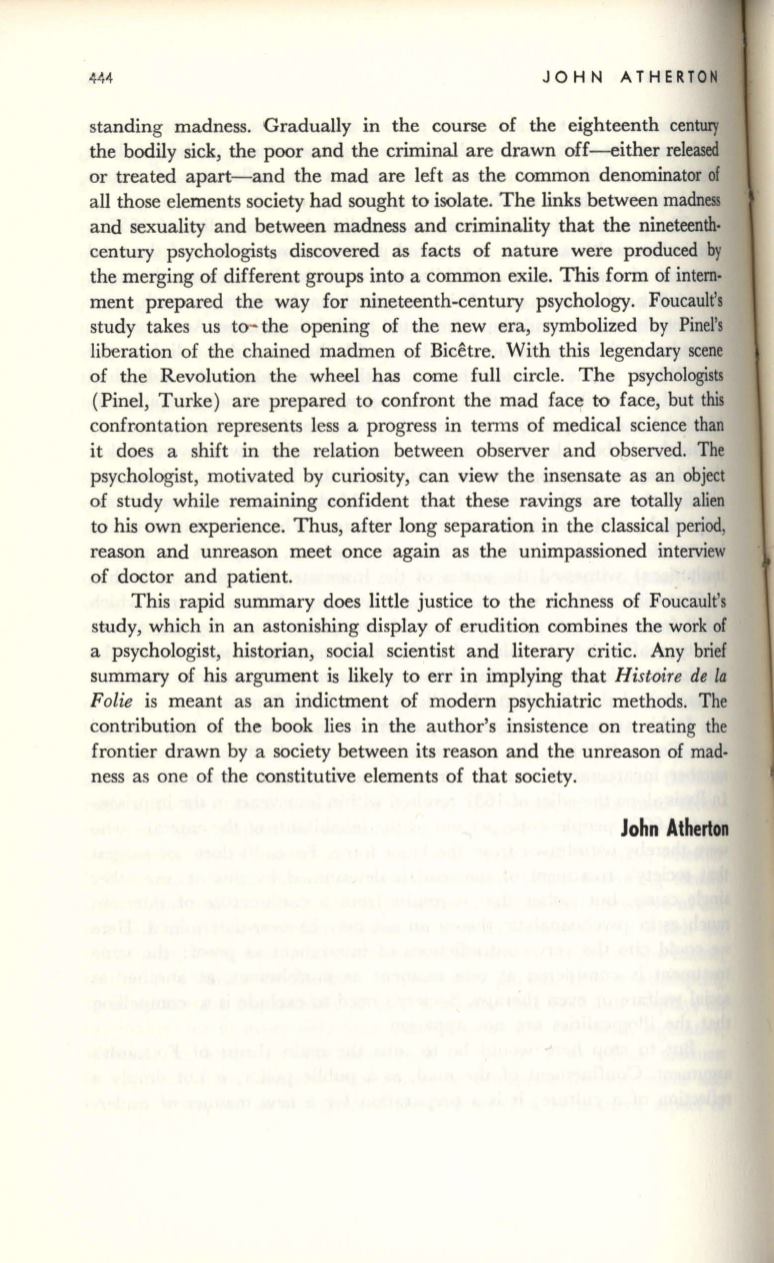
444
JOHN ATHERTON
standing madness. Gradually in the course of the eighteenth century
the bodily sick, the poor and the criminal are drawn off--either released
or treated apart-and the mad are left as the common denominator of
all those elements society had sought to isolate. The links between madness
and sexuality and between madness and criminality that the nineteenth·
century psychologists discovered as facts of nature were produced
by
the merging of different groups into a common exile. This form of intern·
ment prepared the way for nineteenth-century psychology. Foucault's
study takes us to- the opening of the new era, symbolized by Pinel's
liberation of the chained madmen of Bicetre. With this legendary scene
of the Revolution the wheel has come full circle. The psychologists
(Pinel, Turke) are prepared to confront the mad face to face, but this
confrontation represents less a progress in terms of medical science than
it does a shift in the relation between observer and observed. The
psychologist, motivated by curiosity, can view the insensate as an object
of study while remaining confident that these ravings are totally alien
to his own experience. Thus, after long separation in the classical period,
reason and unreason meet once again as the unimpassioned interview
of doctor and patient.
This rapid summary does little justice to the richness of Foucault's
study, which in an astonishing display of erudition combines the work of
a psychologist, historian, social scientist and literary critic. Any brief
summary of his argument is likely
to
err in implying that
Histoire de
/a
Folie
is meant as an indictment of modern psychiatric methods. The
contribution of the book lies in the author's insistence on treating the
frontier drawn by a society between its reason and the unreason of mad·
ness as one of the constitutive elements of that society.
John Atherton


